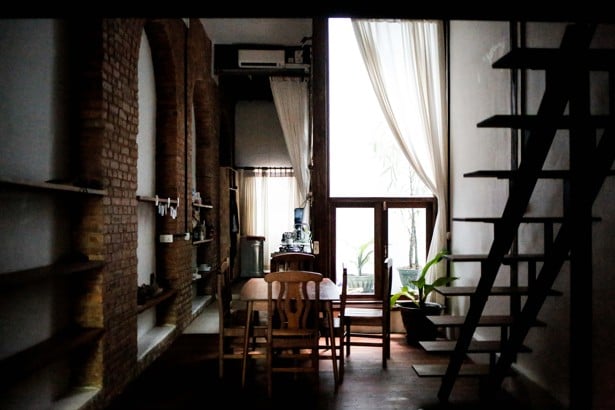
In Yangon, more colonial buildings are being preserved as homeowners realise they can profit from heritage
In Myanmar’s former capital, more owners are discovering the value of refurbishing, not demolishing, their old colonial homes, for which foreigners and wealthy locals are prepared to pay impressive rents

Last year Thein Aung, 70, and his family moved out of their dilapidated house on 47th Street, downtown Yangon. They were making way for a complete interior refurbishing of their old homestead and the arrival of foreign tenants who would pay them hefty rents for the next five years.
“This building is about 100 years old,” says Thein Aung, on a recent visit with his wife and two sons to the renovated two-storey home. “We lived in this house for five generations.”
Thein Aung and his wife, Tham May Ping, are both fifth-generation Sino-Burmese. Their ancestors migrated from southern China’s Guangdong province to Myanmar about a century ago in search of a better life and business opportunities in the then thriving British colony, formerly called Burma.
Thein Aung’s great-great-grandfather was a construction contractor who made enough money to buy the house on 47th Street from an Indian merchant. Tham May Ping’s forefathers opened a popular Chinese restaurant on 22nd Street.
The couple now live on 22nd Street and rent the 47th Street residence out to three foreigners, having split it into three modern flats. The facade and main structure of the building has not been tampered with, in keeping with heritage requirements.

Thein Aung’s family had little money to refurbish their house during the dark years under the socialist regime of former military strongman General Ne Win (1962-88), followed by the slow years when Myanmar was under economic sanctions (1990-2010). In turn, the place became increasingly decrepit.
“We could have demolished the building,” says Tin Htet Kyaw, Thein Aung’s son, who is studying medicine in New York. “But we were keen to preserve the structure and to have a modernised version of it. It seemed a win-win solution for us and the community. It would have been a shame to put up a new house or apartment building here.”
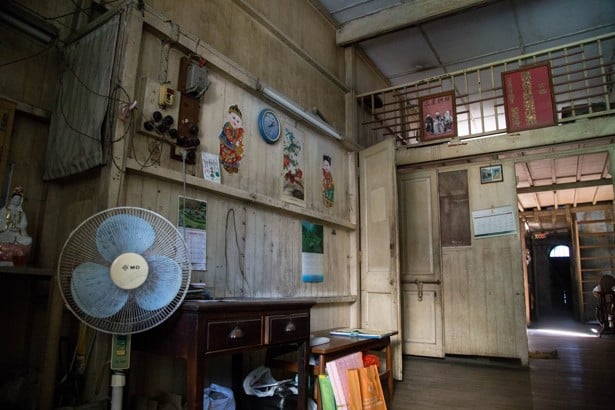
That’s where Doh Eain – a social enterprise started by Dutch national Emilie Roell – stepped in.
Doh Eain (“Our Home”), launched in 2016, has refurbished 10 “heritage homes” in downtown Yangon and is now working on its 11th project in the city.
Roell, who came to Yangon in 2013 working for the European Union, stumbled into heritage home renovation and rentals “by accident”. As a newcomer she had sought out an old apartment in downtown Yangon – the original city centre during British colonial times – and refurbished it.
Later, a taxi driver friend asked her to help him refurbish his old home. Roell paid for the refurbishment and the friend rented the place out to foreigners, paying her back within a year.
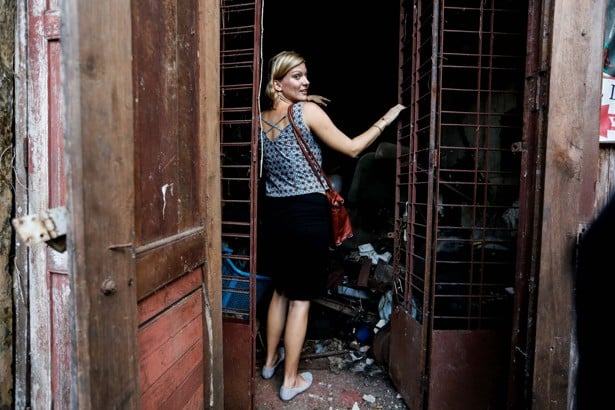
Then other local families approached her, asking for financial input and refurbishing guidance, and Roell saw an opportunity to contribute to the preservation of Yangon’s architectural heritage on a grass-roots level.
“A lot of these people don’t realise they have something that is potentially quite valuable, or if they do realise it, they don’t have access to finance to monetise that value,” Roell says. “Access to finance is very hard here, so even if they wanted to invest money in their property, it would be very hard.”
Yangon, formerly known as Rangoon, was the capital during colonial rule between 1886 to 1948. After Myanmar gained independence, it remained the political centre until 2006, when former military strongman Senior General Than Shwe moved the ministries and government offices to Naypyidaw.
This transfer from Yangon left 189 public buildings abandoned, many of them more than 100 years old. They were also left vulnerable to demolition, dereliction or sale to businessmen who were unaware, or unconcerned, about their cultural and heritage value.
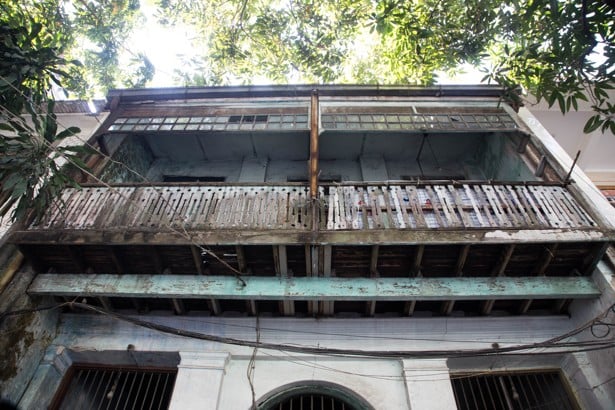
There were fears that Yangon’s legacy of colonial era architectural treasures was doomed, despite being remarkably well-preserved during the Ne Win years of economic stagnation and isolationism.
“Poverty is said to be the best preserver, so obviously isolation was what initially preserved a lot of the heritage buildings,” says Harry Wardill, Myanmar country director of Turquoise Mountain. The organisation is a British charity that renovated a building on Merchant Street and is now working on the former Ministry of Hotels and Tourism Building across from Sule Pagoda.
We are trying to tell these original owners that they should hold onto what they have because it will be more valuable
Not all of downtown Yangon is made up of vintage heritage buildings, however.
“There was kind of an influx of developers in the 1990s when a lot was lost,” Wardill says. “And then this more recent opening in 2012 [saw] bigger investments. So the 1990s stuff is all around – crap that just went up.”
Thanks in part to the pioneering efforts of the Yangon Heritage Trust, founded in 2012 by Thant Myint-U (grandson of U Thant – a former Burmese UN Secretary General), many public heritage sites have been saved from demolition and are being reinvented as hotels, office buildings, shopping bazaars, restaurants and museums.
“Those buildings are not under such a huge threat any more, but 70 per cent of the heritage in Yangon is privately owned,” Roell says. “Those iconic buildings are important, but so are all these little iconic streets, filled with privately owned, smaller heritage buildings.”

Doh Eain is not the only organisation which has invested in renovating private homes in Yangon. Other foreign entrepreneurs have also done so – either for their own offices or residences, or to rent out to other foreigners for a profit.
Roell’s operation makes sure the original Myanmar owner keeps hold of the property, which is usually returned to their complete control after a five-to-10-year lease contract, allowing Doh Eain to make its investments back and a small profit.
“We are trying to tell these original owners that they should hold onto what they have because it will be more valuable,” Roell says.
Doh Eain also provides property management services, something that is woefully lacking in Yangon.
“We’ve been here five years and this is our fifth apartment,” says Peter Witton, a British Hongkonger and director of Anthem Asia, an investment group, who recently rented out the second floor of Thein Aung’s renovated house on 47th Street.
“The other four were all in new buildings. None were very well designed, nor very well finished, and had landlords not interested in maintenance – plus they were expensive,” he adds. “But the reason you put up with these things was because there wasn’t a lot of choice when we started here.”
Six years ago, after Myanmar launched its political and economic reforms and most sanctions against the country were dropped, Yangon’s hotels, apartments and office buildings were all overpriced and generally shoddy. This resulted largely from a surge in demand from an influx of foreign tourists and investors, and a lack of supply.
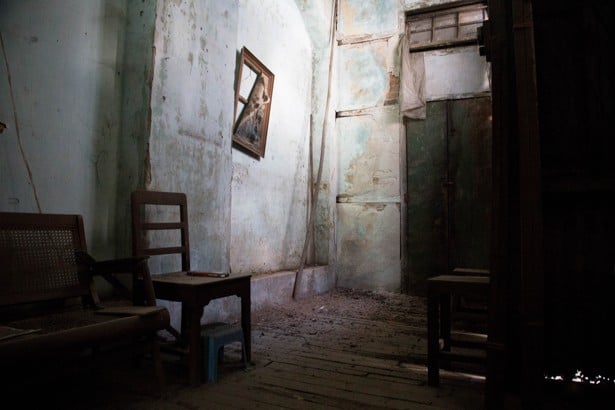
Supply has since caught up with demand, and prices have started to fall. Office rents, for instance, have gone from a peak in 2013-14 of US$110 per square metre (US$10.22 per square foot) at Sakura Tower – then the only international-grade office tower in Yangon – to an average of US$35 to US$40 per square metre for similar space. Office space available in the city has grown from 80,000 square metres (860,000 square feet) in 2013 to about 400,000 square metres today.
New office towers Sule Square and Junction City, in the centre of the old downtown district, have quickly attracted tenants because the area is now more affordable and convenient, property consultants say.
I think we can attract foreigners by maintaining the heritage buildings that we are fortunate to have
This trend is good news for the indigenous movement towards preserving old privately owned buildings in the historic downtown neighbourhoods.
“It’s become a lot more trendy recently,” Roell says. “We’ve definitely noticed a bigger demand for those higher-end, three-bedroom places for people who have good careers in law firms and such, and are working in these office buildings.”
The emergence of a central business district in the heart of old downtown in recent years has also given birth to a spate of heritage investments by Myanmar nationals keen to get on the preservation bandwagon, while catering to the growing foreign market and increasingly affluent Burmese.

For example, Htet Myet Oo founded the Rangoon Teahouse in 2015 in a refurbished building on Pansodan Street, offering a wide variety of Myanmar culinary delights and, of course, tea. Aung Khant Kyaw opened the Scott Hostel on 31st Street in 2016, catering to foreign travellers and businessmen who could not afford the outrageous rates elsewhere.
Another Myanmar heritage entrepreneur is Pyie Phyo Naing (Andy), who first renovated his family-owned apartment in a derelict building on Merchant Street to launch the Willow Inn, a hostel. He has now reinvented the expanded property as Burma Bistro, a restaurant and bar that opened in January.
“I decided I wanted to open a restaurant so the space could be more accessible to the general public,” he says.
Pyie Phyo Naing, who spent seven years studying in the US, sees Yangon’s heritage buildings as one of the city’s real draws.
“I think we can attract foreigners by maintaining the heritage buildings that we are fortunate to have, because our country still has the largest number of heritage buildings in Southeast Asia. That’s what’s neat about Yangon.”